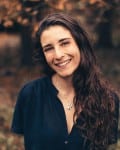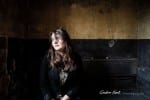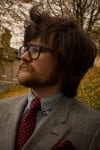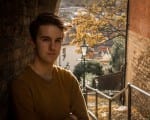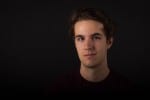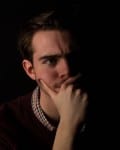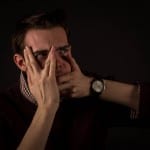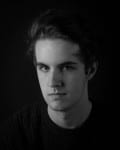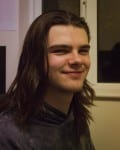Concept
The third brief was to experiment in portraiture photography, capturing an image of self, a friend and a complete stranger. Upon receiving this brief, I was initially a little worried about how it would come out, having never worked on portraiture before. However, after experimentation with studio equipment and editing in LightRoom for portraiture, I became much more comfortable with shooting portrait photography. This brief allowed me to gain a higher understanding of framing and photographic techniques, which made my imagery a lot more intriguing and to a higher, more-professional quality.
Influences & Research
Portraiture is not an area of photography that I have experimented with a lot in the past, so I definitely needed some inspiration as to how to frame my image and present my subject in an interesting manor. I began by looking at other photographers that worked a lot in portraiture and therefore had a large array of examples of work. Ray Roberts, a photographer based in London, is one of the greater influences of my work, as his subjects appear in a location that really do suit them. In my portrait of a friend, I tried to place the subject in an area that suited them – either through what they were wearing or their personality. In a few of Roberts’ photos below, he has placed the subject in an area that suits them. The photograph below of Carolina Cardosi on a busy street, while not explicitly saying it, shows that Cardosi lives a busy life and is the centre of attention. All these things are happening around her (she is in the road and not on a path), yet she is still retaining a formal composure and appears to not be worried about anything surrounding her. By placing the subject in a location that reflects them – rather than on a plain background or against a wall – allows for the audience to try and gather their own interpretation of that individual.
Orientation is also a feature of Roberts’ portraits that intrigue me, as not every portrait is shot in a portrait orientation. The photograph of aerial camera operator and entertainer, Thomas Hooker, is shot in a portrait orientation, as this allows for the photographer to get the subject, his equipment, and the location into the frame. However the photograph of cinematographer David Scott is shot in landscape orientation. This allows for Roberts to capture the subject involved with their craft, without losing any pieces of information that tells you who the person is, and also not leaving any negative space.
Another photographer whose work inspired mine is Gordon Tant, a photographer based in Bedfordshire, whose portraits say a lot about the subject. Unlike Roberts’ photographs where there is more for the imagination of an individual, Tant’s portraits explicitly show the subject doing something, clearly showing who they are and what they are involved in. By photographing subjects in this way, Tant forces the individual to focus on the elements of the photograph, rather than be distracted by all the different stories that could be contained behind these people. However, this could be seen as still allowing an individual to think of a story, just one that is more constrained by the fact that each of these people are already given a character through their clothes and the props around them. Also, with Tant’s work, I am appreciative of the way that he has framed the subject. Only one of the photographs below is show straight on, but even that one is shot while the subject is pulling a pose. In my work, I wanted to mirror this, showing a subject in a pose that wasn’t completely straight on. By having a subject at an angle like this, we can cast much better lighting across them, allowing the photographer to have more creative control over the image. Tant’s images also all follow the Rule of Thirds, being able to be split into three different segments (either horizontally or vertically), which split the image up and allow for the audience to take in the different details in each section, while still retaining the fact that it is one full image.
Initial Experimentation
Having not worked on portraiture before, I set out to use my camera to its fullest potential on the images that I took. One of the first images that I shot was of a fellow student, Josh Carter-Begbie, in the stairwell of the MHT building. This image (shown below) was certainly a good starting point for me, and I thought that it resembled elements of both Roberts’ and Tant’s work. The angle of the subject, combined with the background of the image and the expression on the subject’s face were all contributing factors in what made this image so interesting. I was also happy with the outcome of this image due to the fact that nothing was planned or setup in advance. I told the subject to look at me before pressing the shutter, and the below image was the result.
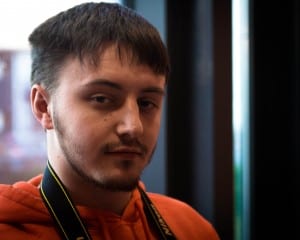
Another image I took on the same day was a lot less successful in portraying the subject, yet still worked well as a piece of portraiture. The image below, while certainly does portray the subject – and can even portray a mood of melancholy or sadness – although the poor lighting reduces the end quality of the image. The unwanted orange saturation caused by a nearby indoor light meant that a lot of the tones in the subject’s skin were lost, and this was harder to recover in the editing stage. However, the cropping and framing of the image does work, and the subject being presented against a white wall, does allow for the image to still retain some good composition. I would, although, frame the subject so that the background is symmetrical.
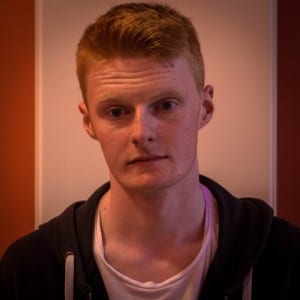
Shooting Exterior Portraits
Up until this point, all my portraits had been shot indoors. To experiment more with natural lighting, I decided to shoot some portraits of friends outside. I also thought that this would be a good point to utilise some elements of the photographers I had looked at. Using Ray Roberts’ technique of placing a subject in a location that suited them, I shot some photos of some friends in the grounds of the Usher Gallery and outside various properties in the Cathedral Quarter. I decided on the location for each subject mainly using what clothing they were wearing and the expressions on their faces. The photographs of Josh Lewis were mainly based on his yellow jumper, which fit nicely in with the orange brickwork and yellow leaves that were about in the Usher Gallery. The photographs of Sean Von Jones were mainly based on his three-piece suit, which added a level of formality into each photograph.
Studio Portraiture
Utilising the university’s photography lighting studio, I set out to experiment with some portraits of myself and of a friend that I’d previously used in the exterior photos. By using the studio lighting, I could have much more artistic control over what shadows and highlights are in the frame. I initially started out by only using one lightsource, which came from the left-hand-side of the image, creating a moody effect across the subject’s face. I liked this effect, which carried through into my final self-portrait later down the line. Upon experimentation, I later used two lightsources, which balanced the lighting across the subject. This put the subject in complete view and allowed for me to have more control in the editing process, as no parts of the image were lost to the darks. I did, however, have a little trouble initially with the lighting as the subject was being over-exposed, although this fixed through dimming the studio lights and using a lower ISO, bringing in less light to the photo.
Photographing Strangers
Due to time constraints and other projects interfering, I initially had a lot of trouble with photographing a stranger. Fortunately though, I was invited to a dinner party where a group of strangers were also attending. Of them though, only two volunteered to have their portrait taken, which made me have to be super careful in ensuring that these portraits were taken well. I tried to capture my subjects mid-action, as I didn’t want the portraits to appear too solid or robotic, and my final image of the stranger came out very nicely on top.




